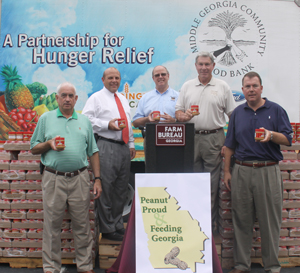 Sometimes a new logo means there are big changes in a company. Not so with the Renewable Fuels Association, at least not in terms of the work they’re doing. They announced their new logo today but say the organization will supply the “same great service.”
Sometimes a new logo means there are big changes in a company. Not so with the Renewable Fuels Association, at least not in terms of the work they’re doing. They announced their new logo today but say the organization will supply the “same great service.”
The Renewable Fuels Association (RFA), long recognized as the voice of America’s ethanol industry, has gone through some changes in the past 24 months. New staff additions have bolstered the RFA’s already unparalleled expertise and expanded its activities beyond its traditional role as ethanol’s chief advocate in Washington.
Given the additions and expanded capabilities of the association, the RFA has refreshed its logo and color scheme. For more information on the logo, including how to use it in place of the old logo, please email Christina Martin at cmartin@ethanolrfa.org.
RFA President Bob Dinneen welcomed both the expanded capabilities of the association as well as the unveiling of the new logo:
“America’s ethanol producers are in a constant state of innovation, creating new processes and developing new technologies that will increase our ability to produce ethanol is an increasingly sustainable manner. As it is with the ethanol producers, so too is it with the trade association representing them. The Renewable Fuels Association has undergone a transformation over the past 24 months, adding expertise and capabilities to better serve America’s ethanol industry beyond its traditional role as the voice of the industry in Washington. Such expansion in the capabilities of the RFA required a refreshing of our logo and image. Thus, the new look – but same unparalleled expertise – of the Renewable Fuels Association. “


 We’re heading into dairy industry time. First up is the
We’re heading into dairy industry time. First up is the  Immediately following this week’s World Dairy Expo is the
Immediately following this week’s World Dairy Expo is the  Last week, the National Pork Board kicked off
Last week, the National Pork Board kicked off  More and more agencies are ramping up staff understanding and expertise on new media. The latest is Lessing-Flynn. Lessing-Flynn has introduced a new, turnkey service developed specifically to assist businesses in both developing and executing social media marketing strategies. The new service, called Reel Social, was designed to help marketers tap into the marketing potential of emerging new media tools like Twitter, Facebook, YouTube and blogs.
More and more agencies are ramping up staff understanding and expertise on new media. The latest is Lessing-Flynn. Lessing-Flynn has introduced a new, turnkey service developed specifically to assist businesses in both developing and executing social media marketing strategies. The new service, called Reel Social, was designed to help marketers tap into the marketing potential of emerging new media tools like Twitter, Facebook, YouTube and blogs. 
 The
The
 This partnership coincides with Novus’s decision to expand the scope of its solutions to include ingredients and technologies that can be directly utilized in supplements, beverages and foods. As part of the partnership, the company has committed to making significant donations in the way of monetary funds as well as raw material zinc.
This partnership coincides with Novus’s decision to expand the scope of its solutions to include ingredients and technologies that can be directly utilized in supplements, beverages and foods. As part of the partnership, the company has committed to making significant donations in the way of monetary funds as well as raw material zinc.